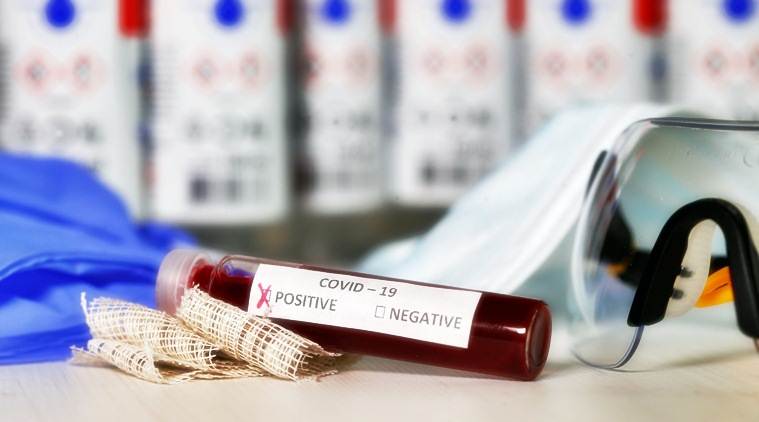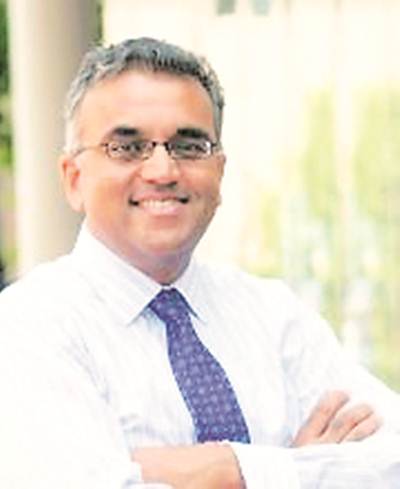 “India, not that any country can, but India certainly, cannot afford a large number of doctors and nurses getting sick and getting out of commission.” (Representational)
“India, not that any country can, but India certainly, cannot afford a large number of doctors and nurses getting sick and getting out of commission.” (Representational)
As India decides its post-lockdown steps, Harvard Global Health Institute’s Faculty Director Ashish Jha tells The Indian Express that any exit strategy is meaningless if the country doesn’t first test enough to determine accurate hotspots. Arguing that India is currently witnessing more transmission than what is being reported, he worries about risking a massive outbreak in mid-May and another six-week lockdown in late-May.
You predicted on April 1, that in three to six weeks, Europe and America will continue but you “don’t doubt that the center will move to places like Mumbai, Rio de Janeiro, and Monrovia.” Considering that your earlier predictions from a month ago have turned out to be true, what are the potential options now for an emerging market like India? How does one balance the economics and health in this country?
I am not sure that there is a tradeoff between health and economics. If you think about the daily wage workers across India who are not getting paid, many of them are suffering from health issues. When you do something like a lockdown, you are doing it for health issues, but you actually have to remember that the economic costs of lockdowns have massive health effects.
But if you flip it, and you open things up, of course, for a short period of time, the economy will go back but what will happen is that as the number of cases spike and as hospitals get overwhelmed, that will also have a big negative impact on the economy. Who will want to go out to restaurants and hotels if there are tens of thousands of people in all the hospitals across India? Or even, hundreds of thousands of people dying?
We have a dilemma where if you focus on health, you will have not just negative economic effects, but negative health effects. And if you focus on the economy, you’ll not only have negative health effects, but you will also end up hurting the economy.
We have to find a third path that lets the economy stay relatively open and lets the health issues relatively well managed. I think that third path is possible, but I think it’s going to be very difficult in a place like India.
 Ashish Jha, Daculty Director, Harvard Global Health Institute
Ashish Jha, Daculty Director, Harvard Global Health InstituteDecision makers are discussing potential exit strategies, perhaps gradual, while others are questioning exiting at all. Some have suggested keeping the elderly or those with underlying conditions quarantined ,or focusing a further lock down only in hotspots. What might be this third path be for a place like India?
If you say, let’s only keep hotspots locked down. My first question is, how do you know which places are hotspots? If a place is not doing a lot of testing and doesn’t have a lot of cases, that doesn’t mean it’s not a hotspot. Until you have very extensive testing, you can’t tell me that Bihar only has so many cases. No, I need to know how much testing is happening to know how many cases are actually there.
On the issue of keeping vulnerable people locked up. This is essentially the idea the UK played with for about three weeks and then they realised that it’s not doable. The idea that we will keep these true communities separate, especially in India with multigenerational families, what are you going to do if you are working and living with your parents and grandparents?
India’s first strategy has to be an extensive ramp up of testing. As of yesterday, India had done 1 lakh tests. That’s nothing for the size of India. They need to be doing at least 10 times as many per day. Now, that’s hard. You got to ramp up the private sector. It’s going to be a lot of work around building new regents. But, the problem is that if you don’t do that you can’t stay in lockdown forever.
If you open up without good data of how much disease there is in your community, what will happen is that the disease is going to come right back. Lockdown doesn’t cure the disease. It just reduces the burden. But it doesn’t eliminate it. A lockdown is not a cure.
And so here is the biggest problem with the disease. The biggest problem is that any action you take today, you will not see the effect of that for three weeks. So, imagine on April 14, if the country decides no more lockdown. April 21, everything will look great. April 28, people will be celebrating that we have beaten coronavirus. By early May, you will see spikes in cases. By mid-May, it will be widespread across India. And by late may, another lockdown that has to be six weeks and it will be a huge challenge.
That is the scenario to avoid.
The basic solution you are giving is testing. ICMR has responded to testing questions by stating that the government has to keep in mind a population size that WHO recommendations don’t account for, that the country can’t waste resources on futile testing, and that a random surveillance approach of severe respiratory illnesses across the country would show if the disease was spreading. What is your take on this testing strategy from a few weeks ago?
Yes, you should be testing people who are high risk, or people with pneumonia or respiratory distress. But you actually also want to be testing people with mild disease. You also want to be testing people who have been in contact with mild disease. You also want to be building up a sample of relatively healthy people.
For the last month we have known that between 20 to 25 percent of transmission happens between asymptomatic people. You will never pick them up unless you are doing a certain amount of random sampling in that community. That’s not American strategy or Italian strategy. That’s a human strategy. As far as we know the virus affects all humans the same.
The Government continues to state that India is not in a community transmission stage, even though many cases don’t have a clear contact or travel history tracing back the infection. Do you think the virus is transmitting across the community in a way we can’t see?
Using my words carefully, I am worried that there is more widespread community transmission than we are seeing. When you don’t have extensive testing, you have to assume community transmission because that has basically been the pattern in every other country in the world. The only countries that have been able to stop substantial community transmission, have been countries that had a massive scale up of testing, like South Korea.
One more point on this: the lockdown, I think, has been very helpful in terms of controlling the disease. I think it’s possibly helping those communities where there was a lot of transmission happening, the cases petered out and became very low level.
But I have no question in my mind that when India opens up again, community transmission will begin again and will take several weeks for us to see it. But that doesn’t mean it’s not happening.
Besides lockdown and testing strategies, what about India’s preparedness with PPE equipment, ventilators, and other healthcare essentials?
Based on everything I know, whether it’s now or once the lockdown is over, we know that there will be enough of an increase that hospitals and the healthcare system will get stressed.
If you don’t have an adequate PPE of high quality, what will happen is your doctors and nurses will start getting sick. Many will end up dying and what you will have is an even further collapse of the healthcare system.
India, not that any country can, but India certainly, cannot afford a large number of doctors and nurses getting sick and getting out of commission.
India has plenty of capacity to manufacture these things. Of course, there is a global shortage and everyone’s competing for PPE’s. For a lot of this, India is going to have to rely on internal manufacturing, but China has also ramped up manufacturing and that could be another source.
While WHO has complimented India, the Government has made decisions against WHO advice. What’s your take?
WHO ultimately only makes recommendations and India has to make decisions for what is good for India.
But, WHO is doing a very good job and their general recommendations have been very scientifically sound. If you were going to go against WHO recommendations, I believe you need to have to have a very clear and well thought through explanation for why. And that can’t just be that India is different. What is it about India that makes those recommendations not optimal?
When India has not followed WHO advice, I’m not sure I’ve heard an explanation that to me resonates as being scientifically thought through.
I have been a long term critic of WHO, and we can talk about whether WHO has handled China correctly or not, that’s a different conversation. But I haven’t heard many recommendations for this disease that I disagree with.
What are the factors in India’s favor?
I would be a little bit cautious about how confident we are about anything right now. But that being said, there is enough of a seasonality component that in the next couple of months, it is possible that the virus transmission slows down because of the heat.
That would be great, except here’s the risk. What we know from the 1918 epidemic is that it came back. It will come back in the fall. At that point, you won’t have summer to look forward to bail you out, and if India does not spend the next three, four months really preparing for the fall, India will be shut down for months.